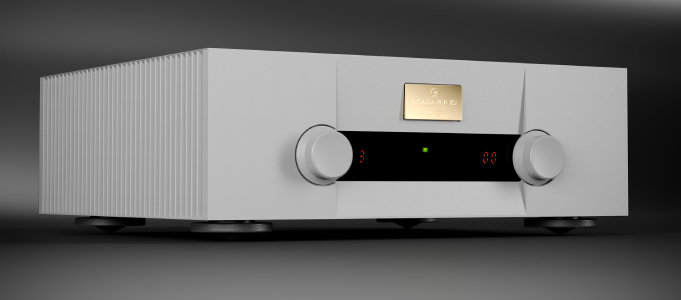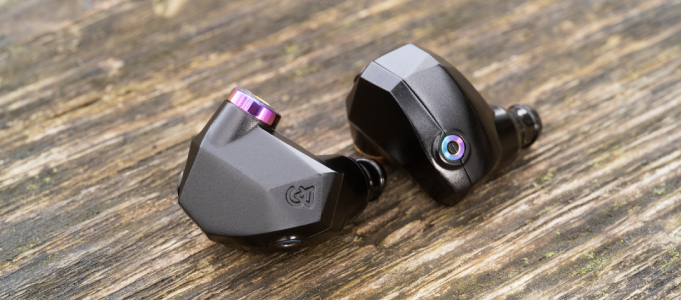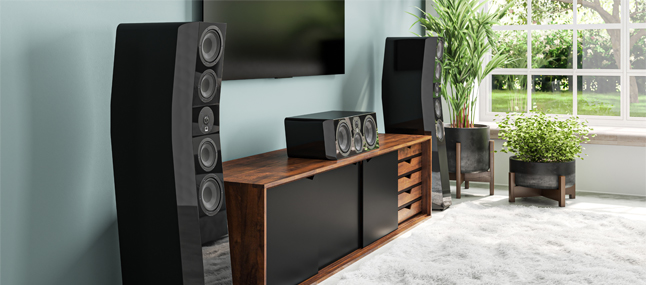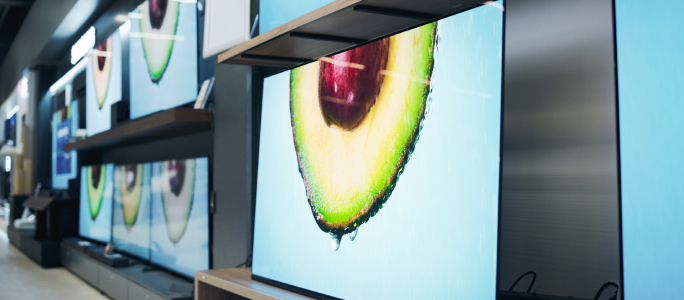Yamaha RX-A3080 Aventage AV Receiver Review

We take a look at one of Yamaha's elusive AV receivers and discover what we have been missing.
Yamaha
Aventage RX-A3080
9.2 Channel AV Receiver
£1,999

Over the past few years I have reviewed a slew of AV Receivers for StereoNET, but for one reason or another Yamaha and I have evaded one another. So I was excited to discover I would be receiving their Aventage Series 9 RX-A3080 for review.
While the RX-A3080 may be Yamaha’s flagship AVR coming in at £1,999, on price alone it could be classified more like a mid-range AVR. And indeed, that’s exactly what I had in mind, but as it so happens, I was wrong …
This is in stark contrast to other manufacturers, where a flagship AVR will likely seeing you receive little change from £3,000-£5,000.
I knew as soon as I lifted the 19.6kg RX-A3080 out of the box, it wasn’t going to be your granddaddy's AVR. If I needed any more confirmation, it was given to me in the form of a big power transformer, peering back at me through the top grill of the A3080.
The Yamaha RX-A3080 is a 9.2 channel AV receiver, which can be expanded to 11 channels with an external amplifier. Yamaha quotes its RX-A3080 as being able to deliver 150 watts; however, this is with only two channels driven.
The RX-A3080 is equipped with a top of the range ESS Sabre Premier Pro DAC. Yamaha has eschewed third-party room correction software, instead, using their own proprietary Yamaha Parametric Room Acoustic Optimizer, (YPAO) with Reflected Sound Control, 3D, 64-bit High Precision EQ Calculation and Angle Measurement.
As expected, the A3080 will decode pretty much anything you care to send its way, including Dolby Atmos, Dolby True HD, Dolby Digital Plus, Dolby Surround, DTS-X and DTS-HD.
It will also play back a range of different audio file formats, consisting of: MP3 / WMA / MPEG-4 AAC: up to 48 kHz / 16-bit, ALAC: up to 96 kHz / 24-bit, FLAC: up to 384 kHz / 24-bit, WAV / AIFF: up to 384 kHz / 32-bit, DSD: up to 11.2 MHz.
If you plan to use the RX-A3080 in a 7.1 or 5.1 speaker configuration, there’s the option to Biamp your front speakers, rather than letting those extra channels lay dormant.
If like most, you plan on routing the video signal via your AVR, the RX-A3080 offers 4K pass-through and upscaling (4K/60p, 4:4:4) via its HDMI inputs. In addition to providing ARC through its HDMI inputs, it also supports HDMI E-ARC and 3D pass-through.
Like its competitors, the RX-A3080 offers a range of multi-room audio features, including Yamaha Music Cast, AirPlay, Bluetooth, Internet Radio, Spotify Connect, Tidal, Deezer and network audio streaming. It also offers up to separate four separate zones of audio, depending of course on how many speakers are used in the main zone.
Rounding out the RX-A3080’s comprehensive range of features is an AM/FM tuner, Alexa compatibility and -somewhat of a rarity in today’s AVR’s- DAB+ radio.
WHAT'S IN THE BOX
While I’ve become accustomed to unboxing ‘large black metal boxes’, to their credit, Yamaha tries to at least do something a little different with the RX-A3080’s two-tone front fascia. The bottom half of the fascia is finished in matt black, while the top half- which sports the LCD, is finished in gloss black.
 The two-tone styling may appeal to some, and while I’m not personally a big fan, it's nice to see it done a little differently for once. Either way, it’s not that much of a statement that it’s going to be bothersome, regardless of which side of the fence you find yourself.
The two-tone styling may appeal to some, and while I’m not personally a big fan, it's nice to see it done a little differently for once. Either way, it’s not that much of a statement that it’s going to be bothersome, regardless of which side of the fence you find yourself.
Located either side of the fascia and in traditional AVR fashion are two large dials for volume control and input selection. There’s also a sizeable drop-down flap on the lower half of the AVR, which opens to a USB jack, headphone jack, YPAO mic input, two analogue audio inputs and a complete range of controls to navigate the RX-A3080’s extensive input menus.
Interestingly, Yamaha has not provided any front-facing HDMI inputs.
The back of the aluminium clad RX-A3080 offers a sizeable range of inputs, including 7 HDMI inputs and 3 HDMI outputs (HDCP2.2, HDR10 / Dolby Vision / HLG and BT.2020 compatible), 3 optical audio inputs, 3 coaxial audio inputs, 9 (10 with front) analogue audio inputs, phono input, 2 component video inputs, 4 composite video inputs, 11.2 channel pre-outs and network input (dual-band, 2.4/5.0 GHz WIFI, is also supported).
Naturally, the RX-A3080 has nine pairs of speaker terminals, which are of decent enough quality. What I was not expecting to find on AVR, particularly at this price-point, was a pair of XLR inputs.
The RX-A3080’s remote is hands-down, the best AVR remote I have used. Finished in matt black, the long remote has a rubbery feel to its front. Its buttons are easy to find with plenty of room between them. Picking up the remote will activate the backlit buttons, a welcome feature for the many whose home theatre resides in a ‘bat-cave’.
The review unit also shipped with a power cable, YPAO microphone, plastic microphone stand, quick start guide and an included bonus Alexa Echo Dot.
The overall build quality of Yamaha’s RX-A3080 was on par with AV receivers at this price-point.
SETUP

While the ‘AV geek’ in me wanted to jump in and start connecting speakers, I resisted the urge and decided to do things the proper way. This meant downloading Yamaha’s AV set up from Google Play.
Although I’ve hooked up one or two AVR’s over the years, I’m glad I did, as Yamaha’s AV setup app really does make hook-up a breeze. After asking a series of questions regarding speaker layout and source components, the setup guided me through the installation process both quickly and logically.
It’s critical that you run YPAO at this point, either through the app or from the on-screen menu. As I discovered, YPAO not only applies room correction, delays and distance measurements, but also tells the A3080 where your speakers are located in the room.
The RX-A3080 will correctly map the overhead speakers in a 5.2.4 or 7.2.4 setup; however, in the case of 5.2.2 or 7.2.2 systems, it will designate the overhead speakers as front-presence. While it may seem simple enough to apply the correct speaker template and select rear-presence, the A3080 will not let you have rear-presence speakers without front- presence speakers.

Are you confused yet? I certainly was.
Fortunately, a quick call to Yamaha Australia sorted things out and I was advised to select a 5.2.2 speaker configuration (noting that the presence speakers would be listed as fronts) and YPAO would take care of determining where the speakers are.
As with pretty much every other room correction system I have used, the RX-A3080 and YPAO incorrectly set my speakers to 'large'. However, this was easy enough to fix within the onscreen menu of the RX-A3080.
Speaking of the onscreen menu, Yamaha has come a long way. The onscreen menus of the RX-A3080 were both sensibly laid out and easy to work with.
PERFORMANCE

I tested the RX-A3080 with a variety of different movies, including Fantastic Beasts and Where to Find Them (4K UHD), Lucy (4K UHD), Mad Max Fury Road (4K UHD) and The Wolverine (Blu-ray).
All discs were played back on a Panasonic UB-9000 which upsampled Chroma to 4:4:4. The Video was routed via the RX-A3080 and sent to a Sony VPL-VW270ES with a FIBBR HDMI cable. During the review period, I didn’t encounter any problems receiving 24fps, 4:4:4 HDR.
With Fantastic Beasts and Where To Find Them, the RX-A3080 put in a powerful audio performance, the crackle of magic and destruction wrought by the Obscurous having plenty of sonic impact. Although it couldn’t quite match my Denon AVC-X8500H in terms of power, it wasn’t as far off as I expected, its performance belies its mid-range price-tag.
Switching to Lucy, the RX-A3080 again turned in a dynamic performance, with excellent placement of effects within my listening environment. The combination of YPAO and the A3080’s processing prowess also managed to create a convincing sense of space at the 15.45 mark.
An excellent example of this being Professor Norman’s (Morgan Freeman) lecture at the 15.45 mark. The dialogue was clearly rendered throughout the movie, even during its more frenetic moments.
The sense of space and depth the Yamaha provided was carried over into a long-time favourite, The Wolverine. While the RX-A3080 lacked some of the refinement of my Denon, it still turned in a detailed performance.
Likewise, while the bass performance was excellent, YPAO wasn’t able to exert the same type of control over the bottom end as Audyssey.
Fed with the bombastic chaos that is Mad Max Fury Road, the RX-A3080 presented a spectacular performance, easily one of the best I have heard in my home theatre.
CONCLUSION
 Yamaha’s RX-A3080 came as a very welcome surprise. It’s a powerful sounding AVR for the money, with a detailed and natural sound quality. While it may be too early in the year to award a best in class award, it’s a very worthy contender. For now, Yamaha’s RX-A3080 earns a well-deserved 5-star Applause Award.
Yamaha’s RX-A3080 came as a very welcome surprise. It’s a powerful sounding AVR for the money, with a detailed and natural sound quality. While it may be too early in the year to award a best in class award, it’s a very worthy contender. For now, Yamaha’s RX-A3080 earns a well-deserved 5-star Applause Award.
For more information visit Yamaha.
Tony O'Brien
Tony is a certified ISF Calibrator by day, and an accomplished Audio-Visual reviewer specialising in theatre and visual products by night. Tony has calibrated and worked with some of the best home cinema designers throughout Australia.
Posted in:Home Theatre Amplifiers AV Receivers & Processors Applause Awards 2019
Tags: yamaha
JOIN IN THE DISCUSSION
Want to share your opinion or get advice from other enthusiasts? Then head into the Message Forums where thousands of other enthusiasts are communicating on a daily basis.
CLICK HERE FOR FREE MEMBERSHIP











